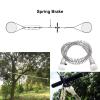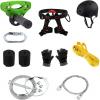Why Trampoline? Many Health Benefits of Exercising on a Trampoline Explains Well
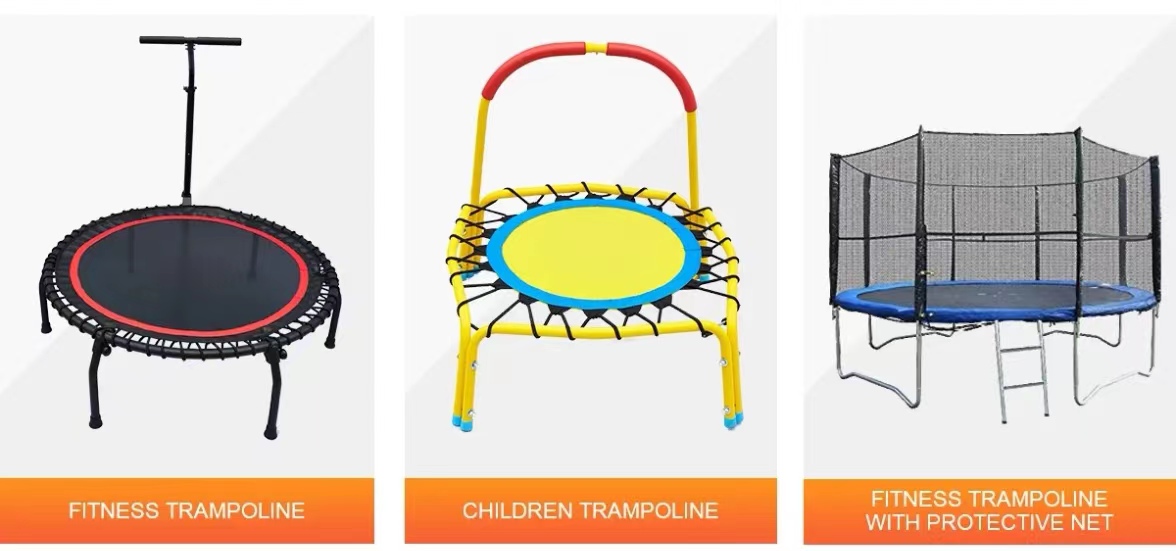
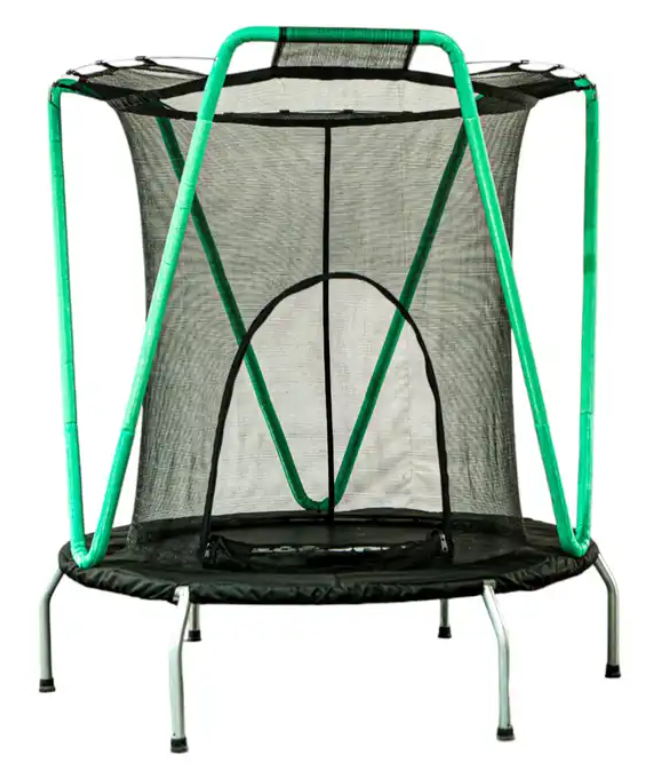 Many Health Benefits of Exercising on a Trampoline
It turns out that jumping around is as healthy as it is fun
Jump on it! Jump on it! Jump on a trampoline, that is, if you want some serious health benefits disguised within a very fun, bouncy workout.
Exercise coordinator Lori Lyons, MBA, AFAA, CWA, explains how you can get the jump on your health by working out on trampolines.
Is jumping on a trampoline good for you?
It depends on what kind of trampoline we’re talking about.
As a kid, you may have enjoyed bouncing on those giant backyard trampolines, the dangerous kind that terrified your parents. Those trampolines are associated with so many injuries that the American Academy of Pediatrics says they should only be used by supervised athletes in training for a sport, like gymnastics or diving.
But for adults, exercising on an indoor mini-trampoline is both safe and beneficial to your health. These smaller versions, known as rebounders, are specifically designed for individual workouts.
“Rebounders are low to the ground, which gives you more stability and lessens the chance that you’ll go flying off them mid-jump,” Lyons says.
Trampoline workout benefits
Rebounding (the act of jumping on a rebounder) is a full-body workout that impacts — you guessed it — your entire body. Here are some of the known health benefits of jumping on a mini-trampoline.
1. Builds strength
Unlike targeted training, jumping requires the use of multiple muscles. “When you jump, you use the entire momentum of your body, which forces all of your different muscles to work simultaneously,” Lyons explains.
All of that up-and-down works everything from your abs and glutes to your leg and back muscles, building a strong core and beyond.
2. Improves bone density
“As we get older our bones become more fragile, and it’s very important to start doing the exercises that will improve our bone density,” Lyons says.
One study found that competitive trampolinists had higher bone density at the hip and spine than their peers. Of course, most people aren’t competitive trampolinists — but the data suggests that regular trampolining can help strengthen your bones, which lessens your chances of osteoporosis.
3. Betters your balance
Speaking of bone density: As we age, we’re prone to decreased bone density, which can increase the likelihood of getting injured during a fall. But one study found that 14 weeks of mini-trampoline exercises increased seniors’ ability to regain their balance before falling by about 35%.
“Rebounding is associated with better balance, coordination and motor skills, which can be especially important for people who are at risk of falling,” Lyons says.
4. Good for your heart
“Cardio activity strengthens the heart muscles and decreases the amount of work your body has to do to pump blood,” Lyons says. This can lower your:
Resting heart rate.
Cholesterol levels.
Triglyceride levels.
All of these are, of course, very good news for your overall heart health.
5. Relieves stress
There may be something to the phrase “jump for joy.” Exercise, in general, is associated with stress relief because it releases endorphins — natural substances that help you feel better and maintain a positive attitude.
Rebounding is specifically associated with stress relief because of the unique impact it has on your body.
“Jumping causes you to repeatedly tense and release your muscles, which is good for your circulation,” Lyons says. “Then, when you’re done jumping, your muscles are loose and relaxed.”
Getting started with mini-trampoline workouts
Ready to jump to it? Here are a few tips for rebounding beginners:
Maintain your balance: If you’re worried about slipping on the rebounder, try jumping barefoot or in a pair of grippy socks, which will help stabilize you.
Begin with the basics: “Simple but impactful moves like jumping jacks and jogging in place can help acclimate you to the mini-trampoline,” Lyons says.
Find a class: Depending on where you live, you may be able to take an in-person group fitness class, sometimes listed as mini-trampoline or rebounding classes.
Keep it away from kids: Like big, outdoor trampolines, even small rebounders can pose a danger to children, especially those under age 6, so store your equipment someplace where little ones can’t access it.
If you have any concerns about your ability to use a rebounder or how it may impact your body, be sure to check with your doctor before getting started.
That's why people around the world love Trampolines, CTSC is a reliable and reputable supplier in designing and producing trampolines for over 20 years and win good reputation.
BUYERS FOR BULK PURCHASE PLEASE CONTACT: sales@iziplineinc.com
Thank you!
Many Health Benefits of Exercising on a Trampoline
It turns out that jumping around is as healthy as it is fun
Jump on it! Jump on it! Jump on a trampoline, that is, if you want some serious health benefits disguised within a very fun, bouncy workout.
Exercise coordinator Lori Lyons, MBA, AFAA, CWA, explains how you can get the jump on your health by working out on trampolines.
Is jumping on a trampoline good for you?
It depends on what kind of trampoline we’re talking about.
As a kid, you may have enjoyed bouncing on those giant backyard trampolines, the dangerous kind that terrified your parents. Those trampolines are associated with so many injuries that the American Academy of Pediatrics says they should only be used by supervised athletes in training for a sport, like gymnastics or diving.
But for adults, exercising on an indoor mini-trampoline is both safe and beneficial to your health. These smaller versions, known as rebounders, are specifically designed for individual workouts.
“Rebounders are low to the ground, which gives you more stability and lessens the chance that you’ll go flying off them mid-jump,” Lyons says.
Trampoline workout benefits
Rebounding (the act of jumping on a rebounder) is a full-body workout that impacts — you guessed it — your entire body. Here are some of the known health benefits of jumping on a mini-trampoline.
1. Builds strength
Unlike targeted training, jumping requires the use of multiple muscles. “When you jump, you use the entire momentum of your body, which forces all of your different muscles to work simultaneously,” Lyons explains.
All of that up-and-down works everything from your abs and glutes to your leg and back muscles, building a strong core and beyond.
2. Improves bone density
“As we get older our bones become more fragile, and it’s very important to start doing the exercises that will improve our bone density,” Lyons says.
One study found that competitive trampolinists had higher bone density at the hip and spine than their peers. Of course, most people aren’t competitive trampolinists — but the data suggests that regular trampolining can help strengthen your bones, which lessens your chances of osteoporosis.
3. Betters your balance
Speaking of bone density: As we age, we’re prone to decreased bone density, which can increase the likelihood of getting injured during a fall. But one study found that 14 weeks of mini-trampoline exercises increased seniors’ ability to regain their balance before falling by about 35%.
“Rebounding is associated with better balance, coordination and motor skills, which can be especially important for people who are at risk of falling,” Lyons says.
4. Good for your heart
“Cardio activity strengthens the heart muscles and decreases the amount of work your body has to do to pump blood,” Lyons says. This can lower your:
Resting heart rate.
Cholesterol levels.
Triglyceride levels.
All of these are, of course, very good news for your overall heart health.
5. Relieves stress
There may be something to the phrase “jump for joy.” Exercise, in general, is associated with stress relief because it releases endorphins — natural substances that help you feel better and maintain a positive attitude.
Rebounding is specifically associated with stress relief because of the unique impact it has on your body.
“Jumping causes you to repeatedly tense and release your muscles, which is good for your circulation,” Lyons says. “Then, when you’re done jumping, your muscles are loose and relaxed.”
Getting started with mini-trampoline workouts
Ready to jump to it? Here are a few tips for rebounding beginners:
Maintain your balance: If you’re worried about slipping on the rebounder, try jumping barefoot or in a pair of grippy socks, which will help stabilize you.
Begin with the basics: “Simple but impactful moves like jumping jacks and jogging in place can help acclimate you to the mini-trampoline,” Lyons says.
Find a class: Depending on where you live, you may be able to take an in-person group fitness class, sometimes listed as mini-trampoline or rebounding classes.
Keep it away from kids: Like big, outdoor trampolines, even small rebounders can pose a danger to children, especially those under age 6, so store your equipment someplace where little ones can’t access it.
If you have any concerns about your ability to use a rebounder or how it may impact your body, be sure to check with your doctor before getting started.
That's why people around the world love Trampolines, CTSC is a reliable and reputable supplier in designing and producing trampolines for over 20 years and win good reputation.
BUYERS FOR BULK PURCHASE PLEASE CONTACT: sales@iziplineinc.com
Thank you!
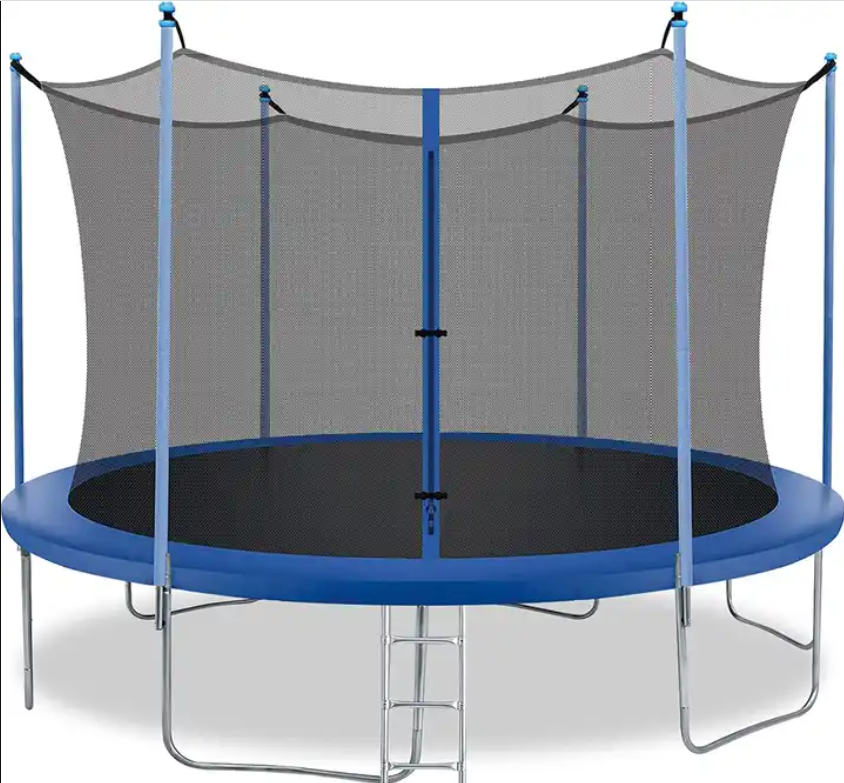
November 15, 2023



